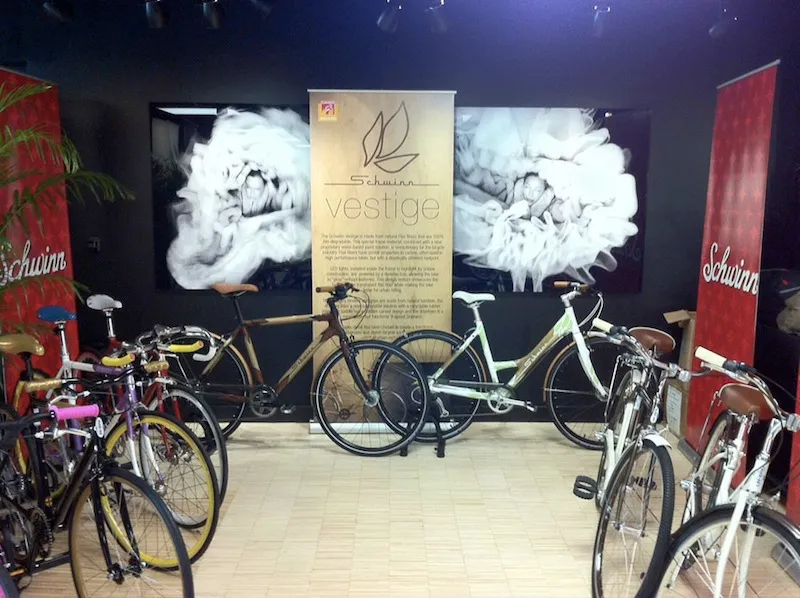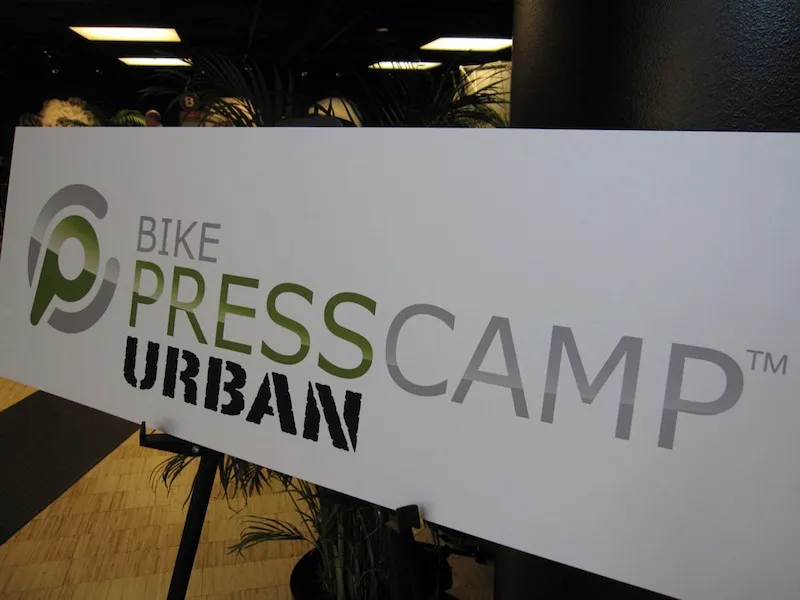Last week, LifeBoat Events ran their fourth ever ‘Camp’ event, bringing 12 companies from the cycling industry’s transportation sector together with 15 journalists for a two-day powwow dubbed Bike PressCamp Urban. Event site was the elegant House of Sweden in downtown Washington, DC, just prior to the US National Bike Summit.
LifeBoat Events PR man Chris Zigmont calls his company’s service “press launch in a can.”
Company founder Lance Camisasca says they simply provide a needed service for companies that “can’t create their own weather.”
For the uninitiated, the PressCamp and the related DealerCamp concept is fairly simple (the UK equivalent is CoreBike). Pool resources from a group of bike companies who essentially pay for face time with influential journalists from inside and outside the industry. The latter version uses the concept to bring companies together with independent bike shops.
Larger manufacturers — Trek, Specialized, Giant and so on — do it all the time, organizing often lavish press and dealer junkets to exotic bike-riding locales. This week’s media-blitz by Specialized for the new Venge road bike perfectly illustrates the ability of these big brands to get their stories out effectively, though, surely at significant cost.
But while one-on-one interaction with editors is a best-case scenario for all bike companies, the costs are prohibitive for all but the largest. That’s why companies such as light and computer maker CatEye opt for a more affordable option.
“This costs us far less than say buying a full page ad in one of the bigger cycling magazines, but we’ll probably end up getting four or five times the value out of it,” explained CatEye’s Ellen Hall, who was in DC showing off several of the company’s newest products.

Schwinn's Urban PressCamp booth
LifeBoat also runs a performance oriented PressCamp get together in Deer Valley, Utah, in late June, which is followed by DealerCamp where top dealers are brought in to, as the company’s tag line reads, “Meet, ride and decide.”
Near the end of the DC Camp, BikeRadar sat down with Zigmont and Camisasca to find out how the concept came about and what the future holds.
BikeRadar: How did this all start?
Lance Camisasca: Long story short, the idea came about years ago between Chris and I as a way to bring together editors with manufacturers of key brands who have interesting products and stories. But unlike the big brands who just wave their arms and editors come running, these companies need help in facilitation and cost management. That’s what we do. Plus, by corralling multiple brands together, it makes it an attractive place for journalists to come and learn about new products, because in one trip they can walk away with material for dozens of potential stories.
Chris Zigmont: Bottom line is that doing your own press launch can cost upwards of $10,000. A lot of companies don’t have that in their budget, so this provides a viable alternative. For a turnkey amount of investment, they just show up with their story and we take care of everything else. It really is press launch in can. For the brands here in DC that focus solely on the mobility segment, they’ll go home saying they did 90-percent of their media outreach work for the year in a couple days.
BR: Lance you were the show director for Interbike for years. Do you see this concept as a down-the-road replacement for big tradeshow-type events?
LC: Not at all. My goal is not to upturn apple cart. We just saw a need for events that are more in tune with the product cycle; bike brands who are getting work done in July and August. If it becomes an annual event for the industry, that’s great.
BR: What kind of mistakes do companies make in this arena?
LC: At Interbike I’d see a lot of companies haphazardly get involved in the trade show, spending way too much money on big booths with a lot of costs or just not doing their homework. You can’t just spend a lot of money and put a stake in the ground and expect to get attendance. You have to do pre-event marketing, you have to prepare products properly — you have to reach out to the press. Some companies just don’t do that very well, which is in part why there is a market for our business.
BR: What’s the future hold? Do you see more segmented events like Urban PressCamp?
LC: We’ve looked at more segment specific events, but that’s problematic for brands that are in mixed lines because then they’d need to prepare for multiple camps. Our focus right now is on bringing PressCamp to Europe. There’s been lots of interest there. Also we trademarked PressCamp, so the word that sits in front of the logo could be bike, or it could be ski, run, backpack and a lot of other things. The blueprint could expand into the whole active lifestyle market. We’re just focused on cycling right now because that’s where our expertise lie.
CZ: Our goal no matter what we are doing is to do high-touch events so we service everyone very well.
